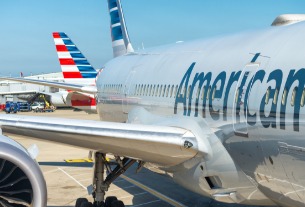As a growing number of Chinese travel abroad for business and leisure, competition to lure mainland travelers is also heating up. One of the people responsible for steering mainland travelers to the United States, and one of the most experienced aviation professionals working in China today, is Delta Airlines’ Director&Chief Representative of China & Hong Kong, Sandeep Bahl. Bahl has worked in aviation for more than two decades, and has been stationed in either Japan or China since 1997.
From his office in Bejing, Bahl oversees Delta’s marketing flights out of Beijing, Shanghai and Hong Kong to Tokyo, Seattle and Detroit. China Travel Daily recently sat down with Bahl to discuss China travel trends, and the efforts from the U.S. tourism industry to attract Chinese visitors.
“China has become a very competitive market, and travelers here have become very savvy,” Bahl says. “When I first came here, to travel outside China was a luxury. In 2003, less than five million outbound trips were made. Today, they take almost 50 million trips per year. Chinese travelers have the will to travel, they like it, and they now also have the means.”
A growing number of trips taken means that Chinese travelers’ tastes are slowly evolving to incorporate more than the most popular destinations, like New York, Los Angeles and Washington, DC, says Bahl.
“A first timer will visit the biggest cities,” he says. “But we’re seeing interest expand beyond those places.” When Delta launched its Beijing-Seattle flight in June, for example, the airline’s representatives started fielding questions about side trips to Mt. Rainier and Reno, Nevada. Other destinations that have seen surprising increasing interest from Chinese travelers, says Bahl, include Yellowstone National Park and Cincinnati (he attributes that one to the Kentucky Derby).
Chinese travelers are quickly becoming better informed, and selecting destinations that fit their individual priorities. “It’s not a herd instinct anymore,” Bahl says. “It used to be, if everybody’s going to New York, then tour operators were only going to New York. Now, I’ve noticed that it’s not about what tour operators are selling; it’s the traveler who is more knowledgeable about where they want to go and what they want to do.”
Bahl adds that word of mouth, spread through face-to-face and online interaction, plays a key role in China as in other markets. “That spreads the word without spending trillions on marketing,” he says. “An individual traveler will come back and his excitement about the trip motivates someone else to go. The resources to spread the word have grown dramatically. You have magazines that weren’t here several years ago, and we use online outlets like Qunar and Travelzoo to advertise and get information who is clicking on what.”
The growth of Chinese outbound travel, and movement toward approved destination status for the United States, have led more U.S. travel providers to reach out to the market here, according to Bahl.
“When we met with U.S. hotels recently, they are all geared up to receive more visitors from China. They are getting ready,” he says. “And when Chinese travelers fly to Atlanta, or any of our gateways, they have a Chinese speaker there when they land. With the MOU [Memorandum of Understanding], one condition was there will be a group of U.S. operators that will be approved by CNTA [Chinese National Tourism Administration]. Those will be an asset in taking care of Chinese tourists.”
But there is still room for improvement in serving the Chinese traveler. “Ground transport, facilities for certain food habits, etc—those are lacking, especially in secondary cities,” Bahl adds. “When our Chinese friends go to travel, after two days of eating steaks, they want Chinese food. Some areas are well covered, but not others.”
U.S. destinations looking to attract more travelers from the mainland could benefit from more cooperation with each other, Bahl says. “We notice that when we take them to Atlanta and Detroit, they want to go beyond the cities. They want to know all about Georgia, and in Michigan, they want to see the Ford factory and museum, and foreclosed houses they can buy. For that you need Michigan state help.”
Destination marketing in the United States, however, is generally set up city by city, with neighbors often viewing each other as the competition. But their resources can be brought together by a third party, says Bahl: “When we launched the Beijing-Seattle flight, we got people in Portland to come and talk to us about an itinerary that covers both Seattle and Portland.”
The World Expo, currently underway in Shanghai, has been an opportunity for Chinese consumers to view various U.S. destinations under one roof. Bahl has visited four times, and believes it has been a great marketing opportunity for travel to the participating countries.
“The Expo will definitely help outbound tourism. People are learning things that will motivate them to travel to these countries. They get to know a destination, and it generates buzz. It is like a big travel show where Chinese consumers are finding out what those countries have for them.”
Mr. Sandeep Bahl will speak on the upcoming TravelDaily China Travel Distribution Summit which will take place at Beijing from September 15 to 16, 2010. For more information, please visit the website at http://summit.traveldaily.cn/12/index_en.aspx




